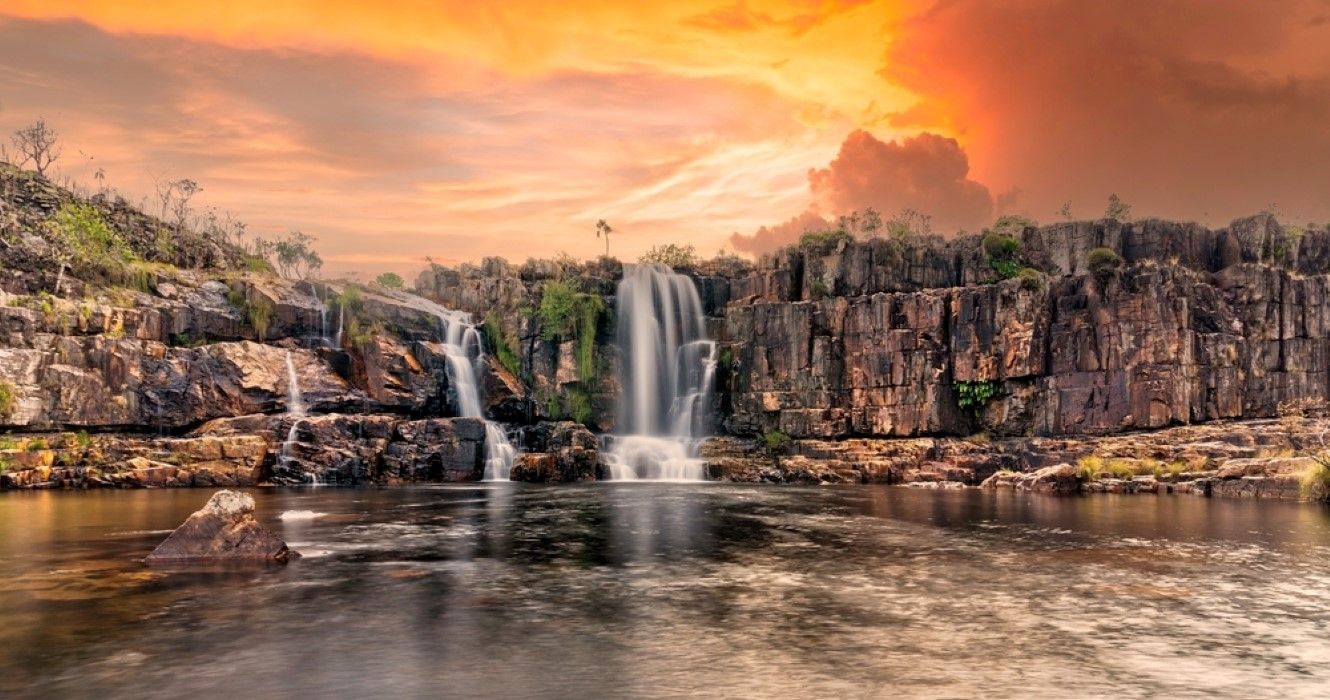There are few countries in the world with as many diverse natural treasures as Brazil. Though its paradisiac beaches are a tourist hotspot, there is much more to explore in this continental country, from the Amazon rainforest to the arid Cerrado savannas all the way down to the subtropical Atlantic rainforest. The diversity of ecosystems that comprise Brazil is truly stunning. A subsection of the Brazilian highlands that has been winning the hearts of adventure travelers and carving out a place as a top destination for ecotourism in Brazil is the Chapadas. Regions named after the characteristic Brazilian flat-topped tablelands (the Chapadas), these sites are a meeting point of the most stunning natural spectacles the country has to offer: tall plateaus, deep rivers, magical caves and grottos, secret waterfalls, jewel-toned lakes, and exciting mountain hikes await thrill seekers and nature enthusiasts.
What Is A Chapada?
Chapada is both the geographical term designating the plateaus landforms that exist in Brazil and also the name given to the regions where the Chapadas are found. The Brazilian Chapadas were formed from the shock of tectonic plaques and billions of years of erosion and sedimentation. They’re characterized by a minimum of 500 meters of altitude and largely flat summits. Usually found in vast extensions, the chapadas mark transitional places in between different Brazilian ecosystems and often contain elements of fauna and flora from multiple biomes, such as Pantanal, Caatinga, Cerrado, and the Amazon and Atlantic rainforests.
This biosphere borderland quality means that the Chapadas are extremely ecologically important for Brazil, usually protected as national parks, and are spaces of great natural contrast and diversity. Chapadas are known for holding a stunning collection of natural attractions and adventures, its multiple trails and water bodies perfect for mountaineering, hiking, swimming, and diving, and multiple cultural events in the neighboring towns, as well as various examples of prehistoric cave paints.
Popular Chapadas In Brazil
Chapada Diamantina - Bahia
Chapada Diamantina is the most well-known of the Brazilian Chapadas, spanning 24 towns in the state of Bahia. A former gold and diamond mine, Chapada Diamantina, was made a National Park in the 80s to protect vast natural resources.
With an endless sprawl of tablelands, hills, canyons, rivers, waterfalls, and caves, it’s impossible to see everything in Chapada Diamantina in just one trip; it’s advised for travelers to plan their itinerary around their base town. Highlights include climbing Mount Pai Inácio, whose view is the Diamantina postcard, Brazil’s highest waterfall, Cachoeira da Fumaça, and Poço Azul, a deep blue cave lake perfect for swimming and floating.
- Extension: 41,000 km²
- How to get there: Fly directly to Lençóis - BA, or drive 5 hours from Salvador - BA.
- Best times to visit: Year-round, but November-January rains can cause slides and floods.
Chapada dos Veadeiros - Goiás
A UNESCO World Heritage Site, Chapada dos Veadeiros is located in the Central Plateau of Goiás. Veadeiros is thought to be a place of great mystical energy due to the repositories of quartz crystals and altitude matching Machu Picchu, attracting outdoor and exoteric enthusiasts alike.
It’s hard not to see the otherworldly beauty of the Moon Valley sculpted by the São Miguel River, marvel at the breathtaking expansion of the rock walls and the great complex of waterfalls, or feel energized by the natural hot springs of Chapada dos Veadeiros National Park.
- Extension: 2,405 km²
- How to get there: Drive by car or take a bus from Brasília - DF to Alto Paraíso - GO.
- Best times to visit: April-July
Chapada dos Guimarães - Mato Grosso
Chapada dos Guimarães National Park was founded in 1989 and is a part of the Pantanal Biosphere Reserve. One of the smallest Chapadas in the country and with relatively easy access, it's a popular weekend destination.
Canyons, sandstone chapadas, floating lakes and rivers, and hundreds of waterfalls dot Chapada dos Guirmarães, as well as an extraordinary diversity of plants and animals. The highlight of the Park is the 86 m tall Véu de Noiva waterfall and Brazil’s largest sandstone cave, Aroe-Jari, which runs through 1.5 km of cave tunnels, underground lakes, and prehistoric cave paintings. The Aroe-Jari cave complex end in the magical crystalline waters of the Blue Lagoon Grotto.
- Extension: 327 km²
- How to get there: Take a bus or car from Cuiabá - MT, to Chapada dos Guimarães town - MT
- Best times to visit: Year-round, but in winter (June-August), temperatures can get quite cold.
Chapada das Mesas - Maranhão
A lesser-known Chapada that has been gaining attention is Chapada das Mesas, located in the Northeastern state of Maranhão, nearly bordering the state of Tocantins. It’s a highly isolated region, more than 800 km away from the capital São Luís, but the myriad of stunning lakes, waterfalls, and breathtaking views from atop the mountains attract more and more travelers day by day.
The best attractions of the Chapada are the Morro do Chapéu, a large mount resembling a hat in a feat of natural sculpture; the Encanto Azul complex with its myriad of waterfalls and natural pools nestled in caves; the Cachoeira do Santuário, a hidden waterfall nestled on the crevice between two giant rock walls that genuinely feels like a natural sanctuary; the Moon Tower, a Chapada accessed by a scenic trail across Mesas’ exuberant nature; and the postcard of the region, the Portal, a gap in the rock wall of the tallest Chapada in the Park, which overlooks and frames the entire natural spectacle of Chapada das Mesas.
- Extension: 1,600 km²
- How to get there: Fly to the cities of Araguaína - TO or Imperatriz - MA, and drive or take the bust to the towns of Carolina - MA or Riachão - MA.
- Best times to visit: May-September, due to the extremely hot weather and heavy rains in the Summer months (November-February)

